
The Standard Model of Particle Physics. This one equation … Flickr
a vour physics etc. [2, 3]. The study of all these aspects has kept theorists and experimenters busy for three decades. Let us briey consider these tw o sides of the Standard Model before we discuss the details. 1.1 Theor etical perspecti ve The Standard Model is a theory of elds with spins 0, 1 2 and 1. The fermions (matter elds) can be

Particle physics a primer on the standard model (Part 1 of 2
The Standard Model combines the theory of relativity and quantum mechanics. In the Standard Model, particle interactions occur through the exchange of bosons, the "force carriers.". For example, the electrostatic force is communicated between two positively charged particles by sending and receiving massless photons.

An introduction to the standard model of particle physics Britannica
introduction. The standard model is the name given in the 1970s to a theory of fundamental particles and how they interact. It incorporated all that was known about subatomic particles at the time and predicted the existence of additional particles as well. There are seventeen named particles in the standard model, organized into the chart.
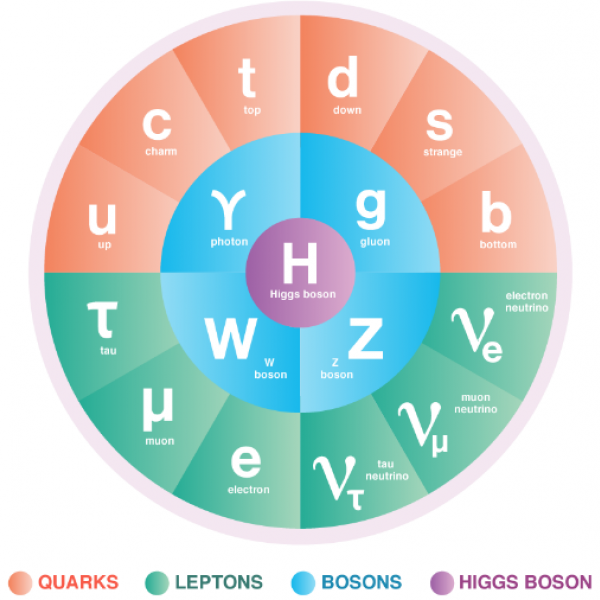
DOE Explains...the Standard Model of Particle Physics Department of
Here follow ten big lessons from the Standard Model organized into four categories: epistemology, natural philosophy, emergent simplicity, and unfinished business. Symmetry abounds in the Standard.
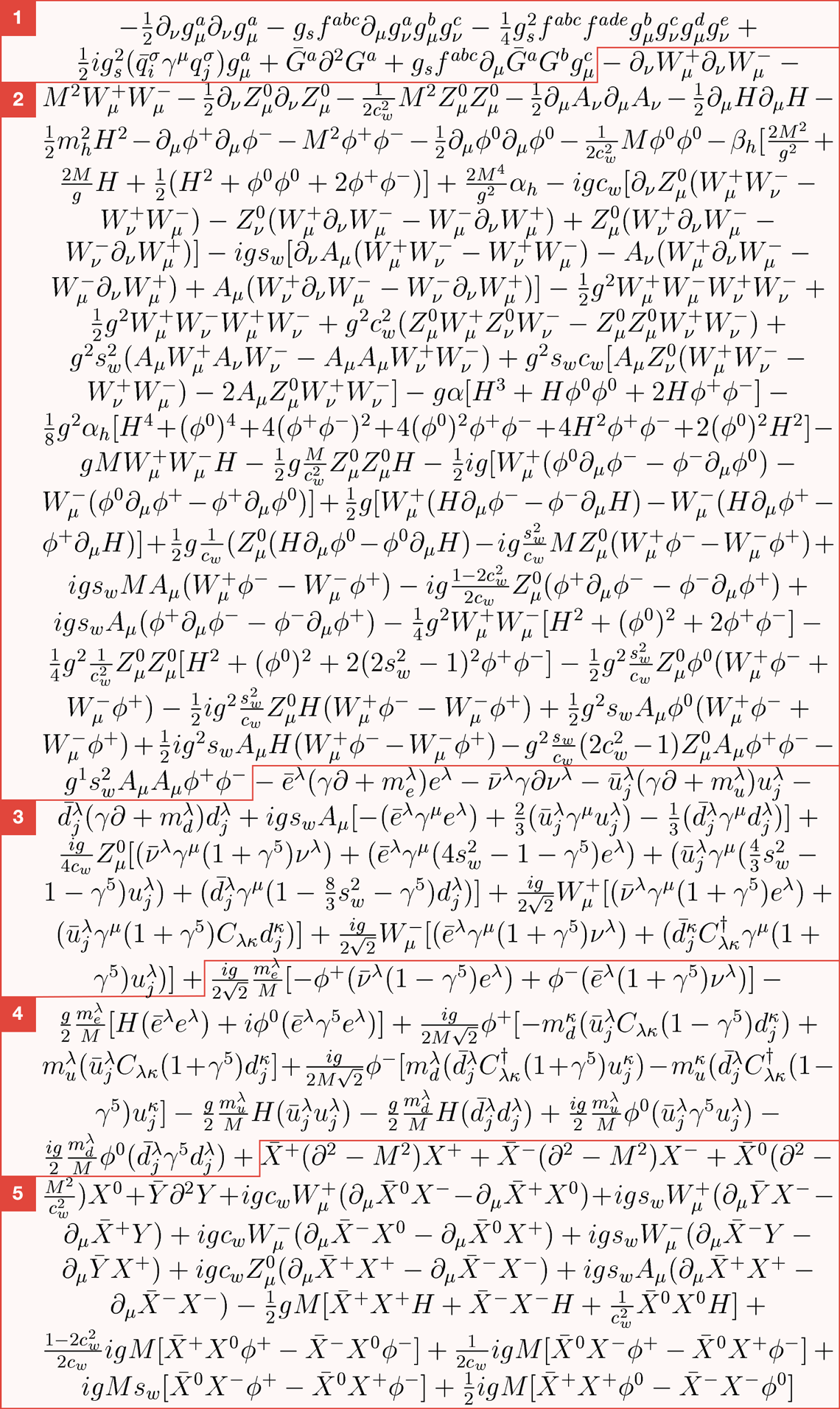
The deconstructed Standard Model equation symmetry magazine
The Standard Model The Standard Model of particle physics provides the most accurate description of nature at the subatomic level. It is based on the quantum theory of fields and has been tested with exquisite precision. In the quantum field theory there is one field. equation µ = − g 2 e m e s where µ is the electron's magnetic.

equation for standard model of physics typo? Physics Discussion Forum
The Standard Model. The Standard Model explains how the basic building blocks of matter interact, governed by four fundamental forces. The theories and discoveries of thousands of physicists since the 1930s have resulted in a remarkable insight into the fundamental structure of matter: everything in the universe is found to be made from a few.

The Neutrino The Key to Understanding the Universe Trinity College
Standard Model Lectures given by Frank Krauss, Michaelmas Terms 2007 and 2008,. extent, influenced by a number of excellent books on quantum field theory, group theory, gauge theory, and particle physics. Specifically, the following books have been used: • S. Coleman, "Aspects of symmetry";. the equations above, Eq..

Standard Model Equation Physics & More
The Standard Model of particle physics is the theory describing three of the four known fundamental forces (electromagnetic, weak and strong interactions - excluding gravity) in the universe and classifying all known elementary particles.It was developed in stages throughout the latter half of the 20th century, through the work of many scientists worldwide, with the current formulation being.

A diagram of the Standard Model Physics
The Standard Model (SM) of particle physics constitutes one of the greatest scientific achievements in modern history. Based on empirical evidence gathered by experiments over the course of more than 100 years, the SM provides a single elegant theoretical framework which describes the interactions between all known elementary particles to astonishing levels of precision.

"Standard Model Equation Physics Theory Higgs Boson" Canvas Print by
All of the matter that makes up your body consists of just three fermions: two quarks and an electron. There are six types of quarks in the Standard Model - given the names "up", "down.

The Standard Model of Particle Physics YouTube
The Standard Model consists of 17 fundamental particles. Only two of these - the electron and the photon - would have been familiar to anyone 100 years ago. They are split into two groups: the fermions and the bosons. The fermions are the building blocks of matter. There are 12 fermions, split into six quarks and six leptons.
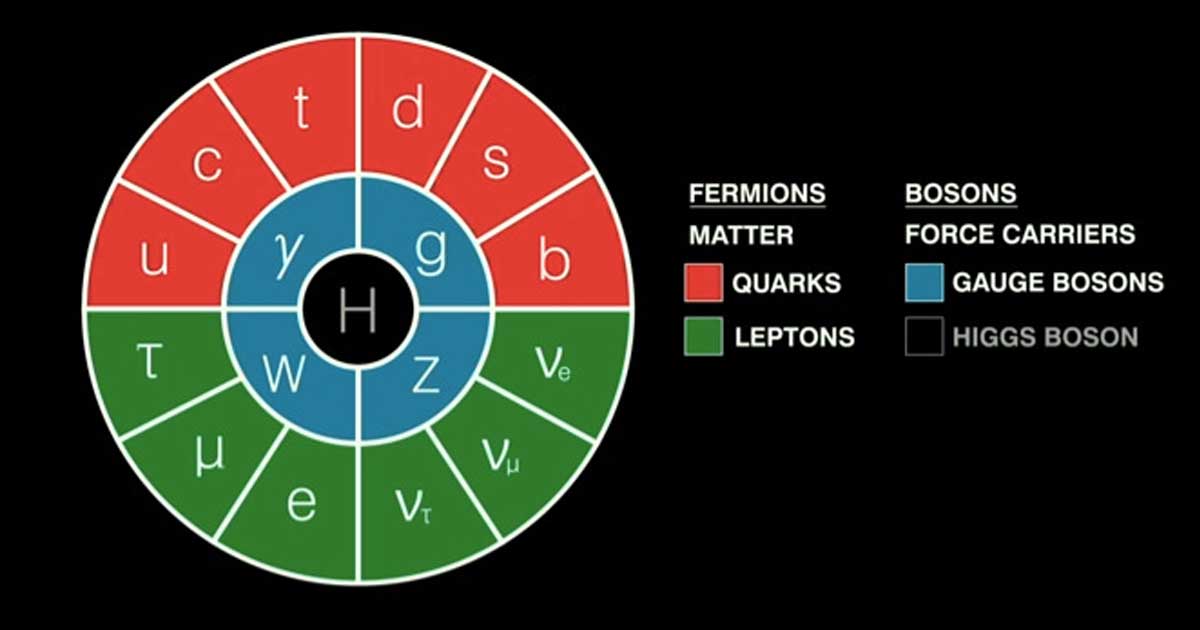
The Standard Model (of Particle Physics) Explained Fact / Myth
The composite fermions arranged in order of increasing complexity are. Hadrons. Mesons. are quark-antiquark pairs. have spin 0 or 1 making them bosons. have charge 0 e or ±1 e. are color neutral. include exotic particles like the pion (π), eta (η), rho (ρ), etc. At least 134 different mesons have been identified.

Almost all of known physics in a single equation. The wavefunction as a
The deconstructed Standard Model equation. 07/28/16. By Rashmi Shivni. The Standard Model is far more than elementary particles arranged in a table. The Standard Model of particle physics is often visualized as a table, similar to the periodic table of elements, and used to describe particle properties, such as mass, charge and spin.
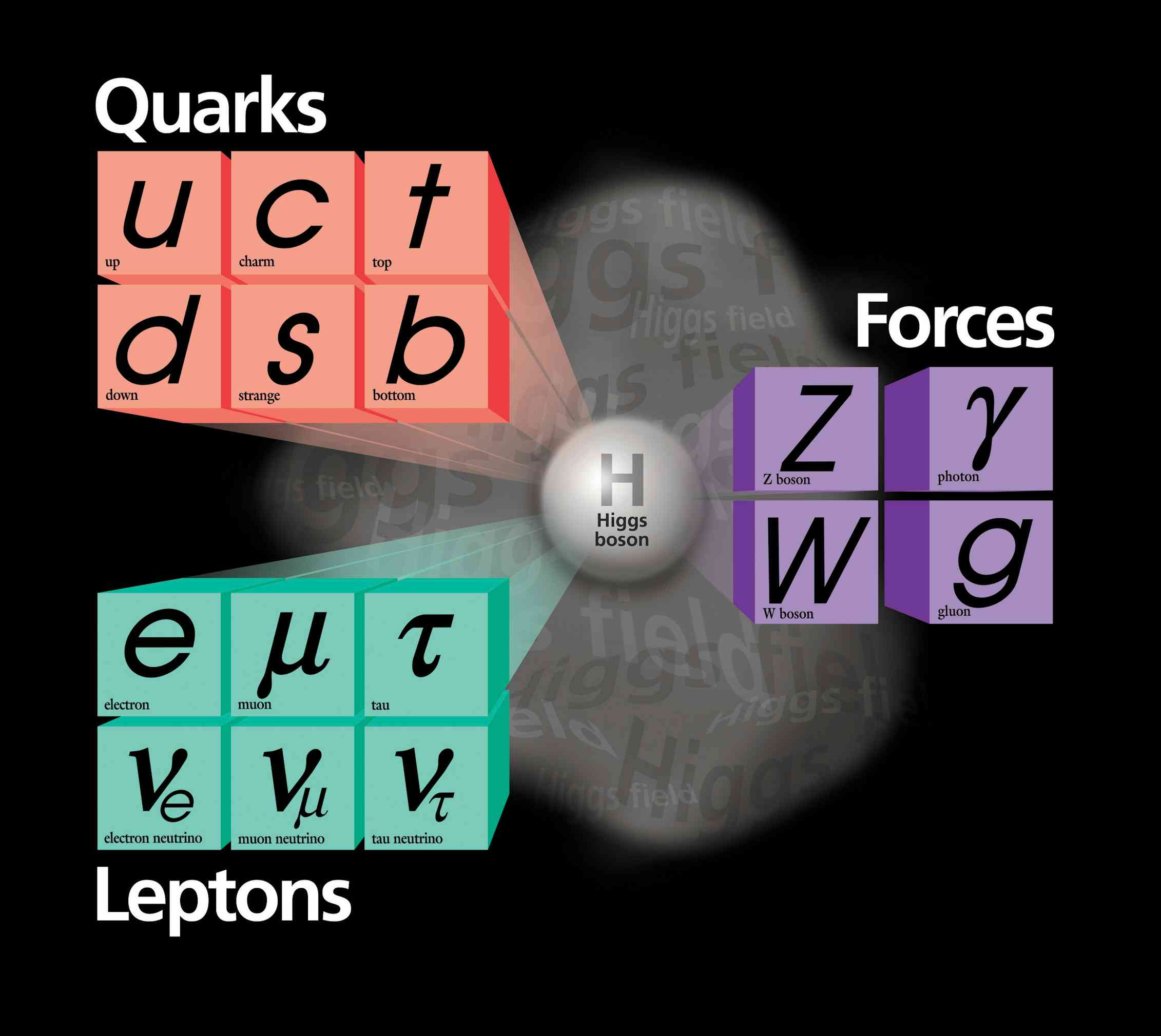
The Standard Model of particle physics The absolutely amazing theory
A summary of forces as described by the Standard Model is given in Table 11.6.1 11.6. 1. The gravitational force, mediated by the exchange of massless gravitations, is added in this table for completeness but is not part of the Standard Model. Table 11.6.1 11.6. 1: Four Forces and the Standard Model. Force.
The equation of the standard model of physics written by Italian
Physics 03 August 2016. By Fiona MacDonald. (Rain Rabbit/Flickr) We talk a lot about the Standard Model of Particle Physics here at ScienceAlert - you know, the "theory of almost everything" that's the best set of equations we have to describe the behaviour of the Universe and everything in it. But have you ever considered what it actually.
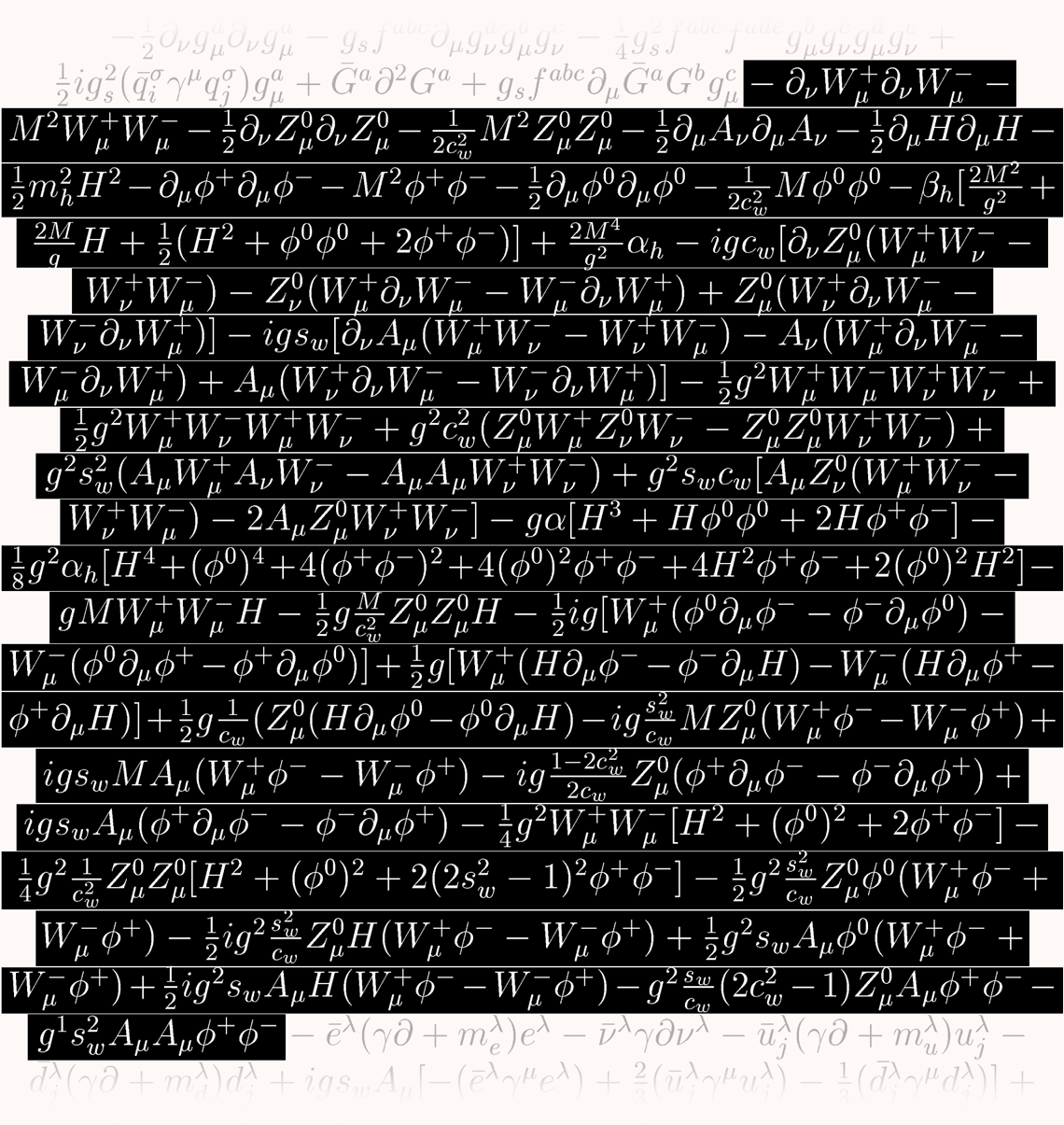
The deconstructed Standard Model equation symmetry magazine
Standard Model of Particle Physics. The diagram shows the elementary particles of the Standard Model (the Higgs boson, the three generations of quarks and leptons, and the gauge bosons), including their names, masses, spins, charges, chiralities, and interactions with the strong, weak and electromagnetic forces. It also depicts the crucial role of the Higgs boson in electroweak symmetry.